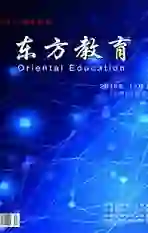A Corpus—based Study of Evaluative Adjectives on Tulou
2017-04-07苏小停
苏小停
Abstract:Grounded on a corpus-based analysis of evaluative adjectives which introduce Fujian tulou in online English, the frequency, collocation and lexical density of evaluative adjectives are explored, to clarify the evaluation of Fujian tulou and its unique role as a folk cultural heritage.
Key Words: corpus, evaluative adjective, tulou, online texts
1. Introduction
As an attempt to reveal the influence of wording and the status of tulou, this paper aims to seek answers to the following research questions:
(1) Are evaluative adjectives frequently employed in tulou- introducing English texts ?
(2) Does this employment affect the image-forming of tulou?
(3) How intense is the effect?
It is grounded on a corpus-based analysis of evaluative adjectives used in tulou-introducing texts on the English websites.
Researches on tulou have covered a variety of disciplines like architecture, arts, tourism and so forth. Unfortunately, few research papers are published in English. It is less to find study on tulou from the linguistic perspective. To do linguistic researches, one of the most popular choices is to analyze part of speech. “Adjective are words capable of condensing evaluations, classifying entities or describing qualities into a single lexeme”(Nuria Edo Marz , 2013). Adjective can be helpful for researchers for different purposes. Yet the influence of using evaluative adjectives in culture dissemination has not been fully investigated.
But various researches grounded on corpus-based analysis of words provide available references for this study. Yanfei, J. (2011) investigated diachronic variation of NEED in written American English by frequency analysis. Yanjun, H. (2011) took big and large as examples to observe the adjective/noun collocation.
2. Methodology
2.1 Data
In this study, the corpus, which contains more than 15000 words, is made up of 38 online English texts from different authoritative official websites, among which CNKI, China Daily, CCTV News are three main resources, as is shown in Table 1. As for the size, the minimum number a text comprises is 222 while the maximum number is 3422.
It is noteworthy that not all original texts are adopted fully into the corpus. The parts in some texts that dont refer to tulou or its culture are excluded.
2.2 Instruments and Process
It is a small and untagged corpus but assisted by the use of Antconc 3.2.1 w, which can be a reliable aid for research. Antconc 3.2.1 w is easy, quick and user-friendly. The methodology adopted consists of two steps: first, a frequency wordlist of the evaluative adjectives occurring in the corpus is produced; then, some of the most frequent evaluative adjectives are analyzed in the concordances to discover collocations.
3. Findings
3.1 Frequency List of EAs
This table provides the frequency list of EAs occurring not less than five times in the corpus. The past participle is excluded because in the corpus the number of past participle as EAs are very small. By examining EAs identified, it can be observed that those EAs can be further categorized into three types: (1) EAs denoting aesthetics: unique, artistic;(2) EAs denoting morals: creative, harmonious;(3) EAs denoting epistemology: virtual, vivid. It shows that the evaluation not only involves aesthetic values but also morals and epistemology and that the promotional language used in those websites is relatively comprehensive and persuasive.
4.3 Collations of EAs
The following table presents the collocates of EAs (frequency >5). The total number of cluster types is 1723 and that of cluster tokens is 12513. Semantically speaking, a majority of EAs in the corpus, such like unique, peculiar, great convey an overwhelmingly positive attitude.
As to collocate, the total number of collocate types is 1100 while that of collocate tokens is 42448. The most frequent EAs with their collocations will be conducive to better understanding of both EAs basic attributive functions and pragmatic meanings. For example, unique is an adjective expressing admiration of something out of unusual or special quality it has. As a consequence, the collocation unique+noun indicates that the object is the only one of its kind. In thecorpus the noun collocates are: style, face, tulou, architecture, structure, building, charm. Combined with the frequency of unique--46 and the text number--38, it can obviously calculated that there is at least one unique in every text averagely. This evidence certifies the argument that EA plays an important role in positive assessment and promotion of tulou.
4. Conclusion
First, EAs are pervasive in online texts which introduce and promote Fujian tulou in English. This finding can be attributed to the news writing or edition published on the web. With sufficient EAs employed in the promotional text, readers are liable to know directly and comprehensively about the entity and attracted by the sites or products. But overwhelming eulogies usually seem to be boastful and rebel readers. Second, EAs in main-stream English websites tend to express strong emotional tendencies to glorify the subject matter. Those EAs are likely to arouse the readers expectations and aesthetic enjoyments.
Hence, as a promotional language tool, EAs finally turn into emotional and eventually behavioral experience. They proclaim the special status of tulou in realms of architecture, culture and tourism and elaborate the vital importance of wording in news writing as well.
References
[1]Marza, N. E. (2013). The formation of the image of top-ranked hotels through real online customer reviews: A corpus-based study of evaluative adjectives as image-formers/providers. International Journal of English Linguistics, 3(4), 15-35.
[2]Yanfei, J. (2011). A corpus-based investigation of NEED in written American English. Overseas English(14), 129-133.
[3]Yanjun, H. (2011). A corpus-based analysis of adjective/noun collocation with Big and Large as examples. Overseas English(3), 228-230.
基金項目:武汉理工大学自主创新基金项目(2015-zy- 140),受“中央高校基本科研业务费专项资金资助”。
